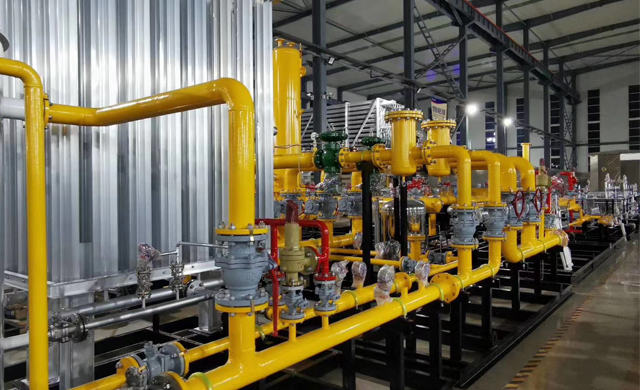
Aug . 14, 2024 14:07
Back to list
Natural Gas Distribution Station and Its Crucial Role in Energy Supply and Infrastructure Development
The Importance of Natural Gas Distribution Stations
Natural gas has emerged as one of the most significant energy sources in the modern world. Its versatility, efficiency, and relatively lower environmental impact compared to other fossil fuels make it a preferred choice for many applications, ranging from residential heating to industrial processes. Central to the successful utilization of natural gas are the distribution stations that facilitate its delivery from extraction points to end-users.
What is a Natural Gas Distribution Station?
Natural gas distribution stations serve as key infrastructures that convert high-pressure natural gas from transmission pipelines into a form suitable for residential, commercial, and industrial use. These stations perform several crucial functions, including the reduction of gas pressure, odorization for safety, monitoring, and distribution to the local grid.
The Role of Natural Gas Distribution Stations
.
2. Safety Measures Safety is paramount in the natural gas industry. As a precautionary measure, distribution stations add an odorant, usually mercaptan, to the natural gas. This gives gas a distinctive smell, similar to rotten eggs, making it easier for people to detect leaks. Moreover, distribution stations are equipped with various safety systems to monitor pressure and flow, detect leaks, and isolate sections of the pipeline in case of emergencies.
محطة توزيع الغاز الطبيعي

3. Quality Assurance Ensuring the quality of natural gas is another vital role of distribution stations. They oversee the removal of impurities and excess water from the gas to ensure it meets safety and quality standards. This ensures that the gas supplied to consumers is both safe and efficient for various applications.
4. Monitoring and Control Modern distribution stations are equipped with sophisticated monitoring and control systems. These systems track the flow of gas, pressure levels, and other critical metrics in real-time. This data is vital for optimizing the distribution process and establishing a responsive framework to address issues as they arise, ultimately ensuring a reliable supply of natural gas.
The Importance of Natural Gas in Today’s Energy Landscape
The global energy landscape is rapidly shifting towards greener and more sustainable sources. Natural gas is often viewed as a transitional fuel that can aid the transition from coal and oil to renewable energy sources. Its ability to generate electricity with lower carbon emissions makes it a vital component in the fight against climate change. Furthermore, the accessibility and abundance of natural gas reserves make it a reliable source of energy for various sectors, including residential heating, cooking, and electricity generation.
Conclusion
Natural gas distribution stations play a critical role in harnessing the benefits of natural gas. They ensure that gas is safely and efficiently delivered to end-users, accommodating the growing demand for this vital energy source. In a world increasingly focused on sustainability, these stations will continue to be essential for ensuring that natural gas—an energy source that acts as a bridge to a more sustainable future—remains accessible and reliable. As technology advances and infrastructure improves, the efficiency and safety of natural gas distribution will only enhance, further solidifying its role in the energy landscape.
Latest news
-
Safety Valve Spring-Loaded Design Overpressure ProtectionNewsJul.25,2025
-
Precision Voltage Regulator AC5 Accuracy Grade PerformanceNewsJul.25,2025
-
Natural Gas Pressure Regulating Skid Industrial Pipeline ApplicationsNewsJul.25,2025
-
Natural Gas Filter Stainless Steel Mesh Element DesignNewsJul.25,2025
-
Gas Pressure Regulator Valve Direct-Acting Spring-Loaded DesignNewsJul.25,2025
-
Decompression Equipment Multi-Stage Heat Exchange System DesignNewsJul.25,2025

